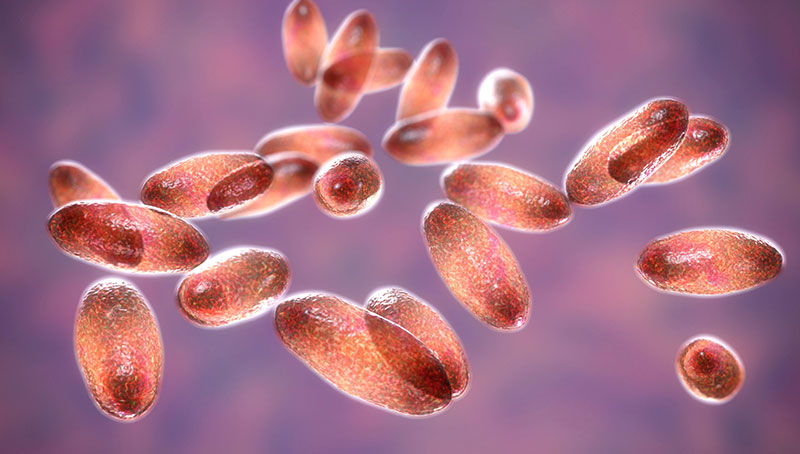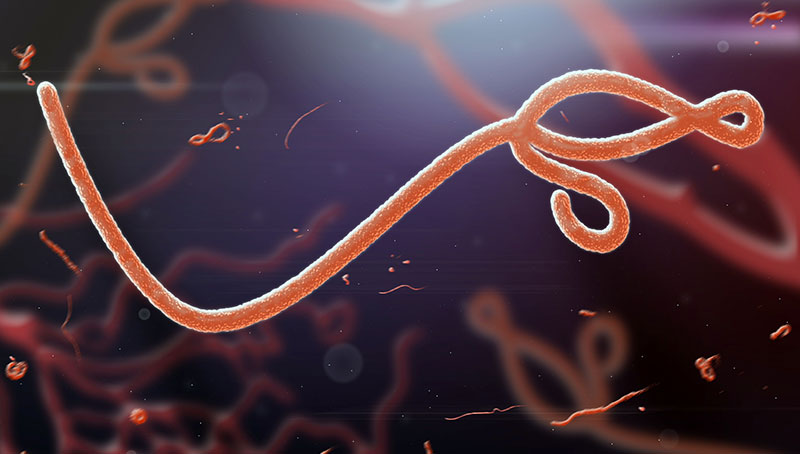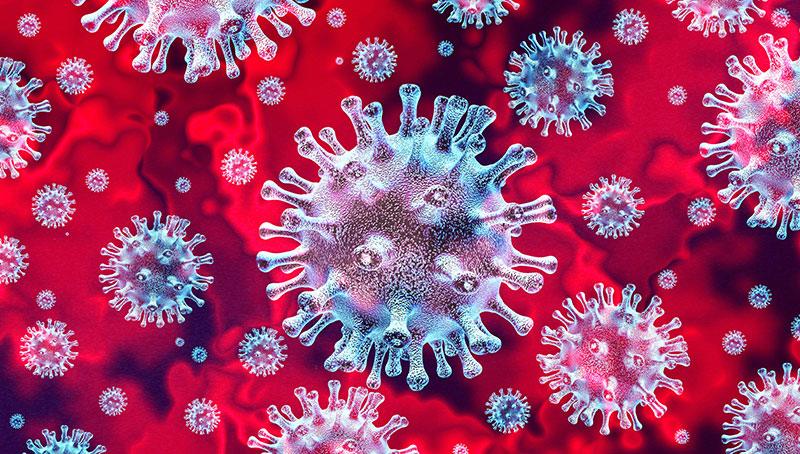
文章+素養題組
Coronavirus1: The Story So Far
Coronavirus Causes and Symptoms2
The novel coronavirus that emerged3 in China late last year causes a medical condition in humans called COVID-19. This condition was first detected4 in several patients in Wuhan; thus, it is sometimes referred5 to as the Wuhan coronavirus. COVID-19 can be passed among humans. In addition, although people with the condition may exhibit6 no symptoms for up to 14 days or perhaps even longer, during this symptomless period, the virus can still be given to others. Together, these factors have enabled COVID-19 to spread rapidly.
Coronaviruses can cause a wide range of illnesses in humans, from mild7 conditions such as colds to far more severe8 ones. These viruses develop in animals before being passed on to humans. The virus that has led to COVID-19 is thought to have come from Wuhan's Huanan Seafood Wholesale9 Market, a market where many types of meat and living animals were being sold.
Coronaviruses attack the human respiratory10 system, which is responsible for breathing. Therefore, common symptoms of COVID-19 include coughing and difficulty breathing, as well as fever in many cases.
Further Suggestions11 for Disease Prevention12
In addition to frequent13 hand washing, there are a number of other measures14 you can adopt to reduce your chances of becoming infected15 with the coronavirus. For example, when you cough or sneeze16, cover your nose and mouth with your arm or with a tissue. If you use a tissue, be sure to throw it away immediately after use and then wash your hands.
Another measure is to physically distance yourself from other people, especially those who exhibit symptoms of COVID-19. Also, try to touch your face as little as possible. This measure is advised because the coronavirus can easily be spread through contact between people's hands and objects carrying the virus. Not touching your face could prevent you from becoming infected. Finally, if you begin to display any symptoms of COVID-19, be sure to seek medical help as early as possible. Earlier detection17 of the disease could enable you to make a quicker recovery18 and prevent those around you from becoming infected.
Word Bank
- coronavirus [kə`ronəˏvaɪrəs] n. 冠狀病毒
- symptom [`sɪmptəm] n. 症狀
- emerge [ɪ`mɝdʒ] v. 出現
- detect [dɪ`tɛkt] v. 察覺;查出
- refer [rɪ`fɝ] v. 談到;提及
- exhibit [ɪg`zɪbɪt] v. 顯現出
- mild [maɪld] adj. 輕微的;溫和的
- severe [sə`vɪr] adj. 嚴重的
- wholesale [`holˏsel] adj. 批發的
- respiratory [rɪ`spaɪrəˏtorɪ] adj. 呼吸的
- suggestion [sə`dʒɛstʃən] n. 建議
- prevention [prɪ`vɛnʃən] n. 預防;防止
- frequent [`frikwənt] adj. 頻繁的
- measure [`mɛʒɚ] n. 措施
- infected [ɪn`fɛktɪd] adj. 被傳染的
- sneeze [sniz] v. 打噴嚏
- detection [dɪ`tɛkʃən] n. 發現
- recovery [rɪ`kʌvərɪ] n. 痊癒
冠狀病毒疫情:目前為止的情況
冠狀病毒的原因和症狀
去年年底在中國出現的新型冠狀病毒會導致人類患上一種稱為COVID-19的疾病。該病首次在武漢的幾名病患身上被發現;因此,它有時又稱為武漢冠狀病毒。COVID-19可以在人類之間傳染。此外,雖然患有這種疾病的人在長達14天或更長的時間內可能沒有顯現出症狀,但在此無症狀期間,這株病毒仍然可以傳播給其他人。這些因素綜合在一起使得COVID-19得以迅速傳播。
冠狀病毒會引起多種人類疾病,從像是感冒的輕症到更為嚴重的病。這些病毒在傳播至人類之前先在動物體內發展。導致COVID-19的這株病毒被認為來自武漢市的華南海鮮批發市場,該市場出售許多種的肉類和活體動物。冠狀病毒攻擊人類的呼吸系統,該系統主管呼吸。因此,在許多的病例中, COVID-19的常見症狀包括咳嗽、呼吸困難,以及發燒。
預防疾病的進一步建議
除了經常洗手之外,你還可以採取一些其他方法來減少你感染冠狀病毒的機會。例如,當咳嗽或打噴嚏時,用你的手臂或衛生紙遮住你的鼻子和嘴巴。如果使用衛生紙,確保在使用後立即將其丟棄,然後洗手。
另一個方法是與其他人保持身體距離,特別是那些顯現COVID-19症狀的人。此外,盡可能少碰觸你的臉。建議這個方法是因為冠狀病毒很容易透過人們的手接觸攜帶該病毒的物體而傳播。不觸摸臉部可以防止你受感染。最後,如果你開始顯現COVID-19的任何症狀,務必盡早尋求醫療幫助。提早發現該疾病可以使你更快地康復,並防止你周圍的人被傳染。
素養題
1.( ) Which of the following map shows the origin of the virus that has led to COVID-19?
|
(A) 
|
(B) 
|
(C) 
|
(D) 
|
(C)
2.( ) Which of the following is NOT mentioned as a symptom of COVID-19 ?
(A) Sneezing (B) Bleeding (C) Coughing (D) Fever
(B) Bleeding
3.( ) Liz travelled to South Korea during winter vacation and went back to Miaoli on Feb. 9, 2020. According to the law, Liz had to stay home for a period of time and could not go anywhere. When was Liz able to go back to school?
(A) Feb. 20
(B) Feb. 22
(C) Feb. 29
(D) Feb. 24

(D) Feb. 24
4.( ) According to the article, coronaviruses attack which part of the body?
|
(A) 
|
(B) 
|
(C) 
|
(D) 
|
(A)
Clinton works in the public health center in Taichung. After the outbreak of COVID-19, the government asked Clinton's team to design a poster to educate local people about how to protect themselves from COVID-19.
5.( ) Which of the following would be the best slogan for the poster?
(A) An apple a day keeps the doctor away.
(B) Don't wash your hands.
(C) Wild animals are delicious and nutritious.
(D) Don't touch your face.
(D) Don't touch your face.
6.( ) Which of the following might be a poster Clinton's team designed?
(A)

(B)

(C)

(D)

(B)

素養活動+學習歷程
活動說明
1.觀看FIGHT THE VIRUS影片。
2.教師帶看歌詞,講解單字。
3.引導學生回答影片相關的問題。
FIGHT THE VIRUS
原曲:Simon & Garfunkel's song 'Sound of Silence'
改編歌詞:Alvin Oon
Hello virus1 from Wuhan
Another problem's here again
Because you see the contagion2 creeping3
And the virus is indeed spreading4
And the memory of SARS planted in my brain
Still remains5
We stand and fight the virus
We hear of theories6 how it grew
From snakes and bats became a flu
Passing the sickness from man to man
Now it's growing, getting out of hand
It's a virus that has travelled near and far
Corona7
We have to fight the virus
And in the latest news I saw
Ten thousand people maybe more
People falling sick with much coughing
People falling ill with much sneezing8
People worried for their health and their ones so dear
Pneumonia9
We keep the fight the virus
Keep your hand clean always know
Hygiene10 will stop that virus grow
When you sneeze cover with a tissue
Even coughing just let me teach you
Wear a mask if you're sick so that others won't get it too
We count on you
To help to fight the virus
Together we must overcome
To beat this virus fight as one
For a life of health and harmony11
It's in our hands it's up to you and me
For the health of our land of our friends and family
Humanity12
We will win this fight the virus
Word Bank
|
1. virus [`vaɪrəs] n 病毒 2. contagion [kən`tedʒən] n 感染 3. creeping [`kripɪŋ] adj 遍地蔓延的 4. spread [sprɛd] v 蔓延 5. remain [rɪ`men] v 餘留;繼續存在 6. theory [`θiərɪ] n 理論 |
7. corona [kə`ronə] n. (人體的)冠狀部位 8. sneeze [sniz] v. 打噴嚏 9. pneumonia [nju`monjə] n. 肺炎 10. hygiene [`haɪdʒin] n. 衛生 11. harmony [`hɑrmənɪ] n. 和睦;融洽 12. humanity [hju`mænətɪ] n. 人性;人類 |
素養題
1. 列出歌詞中出現的疾病名稱:
List the name of diseases in the lyrics.
Flu, SARS, Pneumonia
2. COVID-19 is believed to come from bats.
(1) YES
(2) NO
(1) YES
3. 哪些是歌詞中出現的衛生好習慣?(多選題)
Which of the following hygiene habits are mentioned in the lyrics?
(A) Drinking more water.
(B) When you sneeze, cover your nose with a tissue.
(C) Keeping your hands clean.
(D) Wearing a mask if you're sick.
(B)(C)(D)
影片討論
• What is the purpose of the song?
• What can we learn from COVID-19?
活動一:記憶翻翻牌
活動說明
1.講解歷史上重大傳染病。
2.利用提供的紙遊學習單,分組進行記憶翻翻牌。
Infectious Diseases in History
歷史上重大傳染病整理
|
Name of Disease |
Plague 鼠疫 |
Ebola 伊波拉 |
COVID-19 新冠肺炎 |
|
Originated from |
Eastern Roman Empire |
Ebola River, Congo |
Wuhan, China |
|
Year of Outbreak |
541 |
1976 |
2019 |
|
Transmission |
rat➔flea(跳蚤)➔human |
bat(蝙蝠)➔monkey ➔human |
bat➔pangolin(穿山甲) ➔human |
|
Cause |
Yersinia pestis (鼠疫桿菌) |
Ebola virus (伊波拉病毒) |
Coronavirus (冠狀病毒) |
|
Picture |
 |
 |
 |
記憶翻翻牌
活動規則四人一組,每人輪流翻牌,一次翻兩張,翻到同一分類即得2分
輪下一人翻牌,若翻到不同分類,需覆蓋,輪下一人翻牌
依此類推,得最多分為贏家。

活動二:衛生好習慣-洗手步驟紙遊
活動說明
1.介紹勤洗手七步驟口訣:內、外、夾、弓、大、立、腕。
2.學生熟記後,完成<衛生好習慣-洗手步驟紙遊>學習單。

衛生好習慣-洗手步驟紙遊

學習歷程
利用上方英文版洗手紙遊概念,設計繪圖版的英文洗手紙遊。
延伸學習歷程建議
• 設計防疫海報,宣傳關懷珍愛身邊的親朋好友、注重個人衛生、反思珍惜平凡、健康的每一天等……。
• 寫一封加油信,感謝在第一線對抗新冠肺炎疫情的人(口罩工廠的工作人員、醫師、護理師、醫檢師、檢疫人員等)

影片學習單
新型冠狀病毒(COVID-19)影片學習單
活動說明
1. 講解影片單字學習單。
2. 觀看世界衛生組織(WHO)所釋出新型冠狀病毒(COVID-19)影片。
3. 引導學生回答影片問題。
影片單字學習單
在觀看影片前,請學生搭配龍騰英文GoGoGo,查出下方單字的中文意思
|
No. |
必備單字 |
詞性 |
中文 |
|
1 |
cluster |
n. |
|
|
2 |
investigation investigate |
n. v. |
|
|
3 |
previously previous |
adv. adj. |
|
|
4 |
novel |
adj. |
|
|
5 |
consist |
v. |
|
|
6 |
genetic |
adj. |
|
|
7 |
protein |
n. |
|
|
8 |
appearance |
n. |
|
|
9 |
identify |
v. |
|
|
10 |
circulate |
v. |
|
|
11 |
transmission transmit |
n. v. |
|
|
12 |
determine |
v. |
|
|
13 |
contaminate |
v. |
|
|
14 |
contact |
v. |
|
|
15 |
symptom |
n. |
|
|
16 |
mild |
adj. |
|
|
17 |
severe |
adj. |
|
|
18 |
infect infection |
v. n. |
|
|
19 |
diagnosis diagnose |
n. v. |
|
|
20 |
vaccine |
n. |
|
|
21 |
prevention prevent |
n. v. |
|
|
22 |
standard |
adj. |
|
|
23 |
hygiene |
n. |
|
|
24 |
practice |
n. |
|
|
25 |
associate |
v. |
|
|
26 |
initial |
adj. |
|
|
27 |
spread |
v. |
延伸補充單字片語
1. pneumonia [nju`monjə] n. 肺炎
2. respiratory [rɪ`spaɪrə͵torɪ] adj. 呼吸的
3. gastrointestinal [͵gæstroɪn`tɛstɪnəl] adj. 胃腸的
4. spillover [`spɪl͵ovɚ] n. 擴散效應(非預期)
5. mortality rate 致死率
6. PCR (Polymerase Chain Reaction) 聚合酶連鎖反應
小試身手
|
hygiene |
pneumonia |
infection |
coronavirus |
- In December 2019, there was a cluster of ________ cases in China. Investigations found that it was caused by a previously unknown virus, now named the 2019 novel ________ .
- There are a number of standard ________ practices that have been recommended to protect against ________ and further spread. These include covering your mouth and nose with a medical mask, tissue or flexed elbow.
1. infection, coronavirus
2. hygiene, pneumonia
觀看影片
根據影片內容,引導學生回答學生問題。

1. ( ) Which are the possible symptoms of being infected with COVID-19? (多選題)
(A)

(B)

(C)

(D)

(A) (C)
2. ( ) Which is the correct picture that WHO suggested we follow up on?
(A)

(B)

(C)

(D)

(A)
3. ( ) What is the main idea of this video?
(A) The cause of COVID-19.
(B) Background information about COVID-19.
(C) How to wash your hands to prevent the virus.
(D) The different type of respiratory disease caused by the virus.
(B)
 國文
國文 英文
英文 數學
數學 自然
自然 社會
社會 歷史
歷史 地理
地理